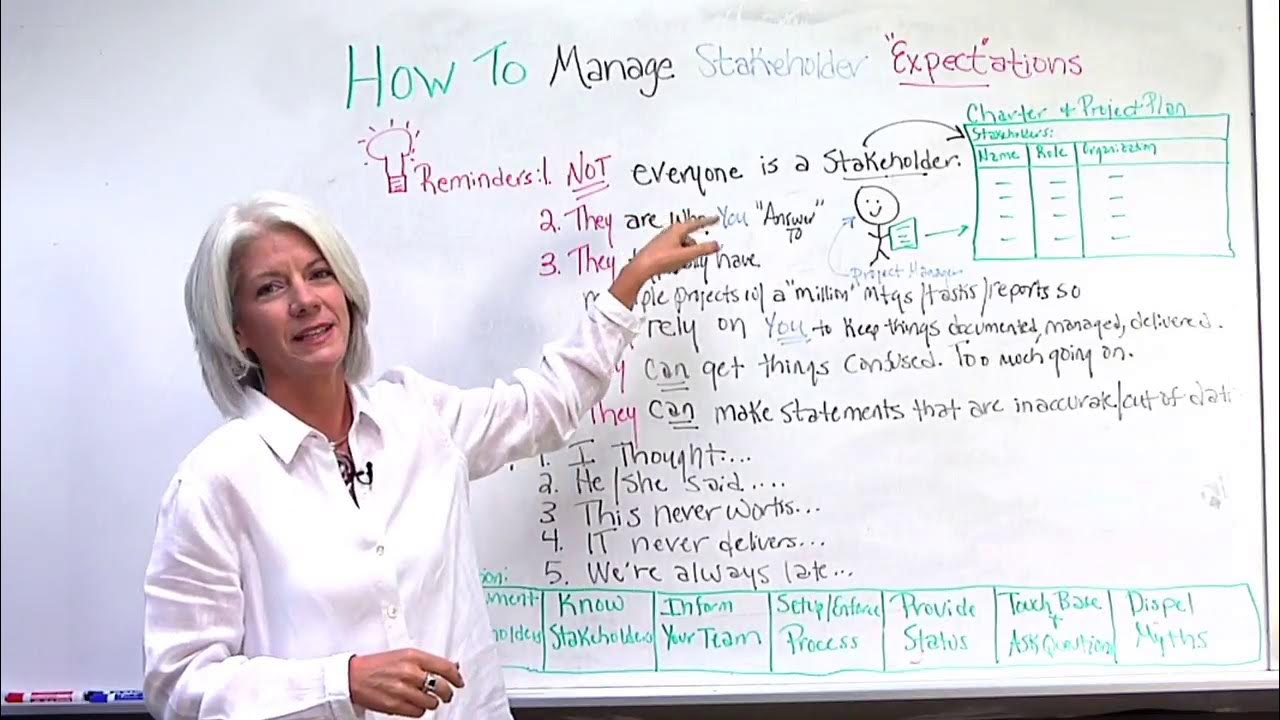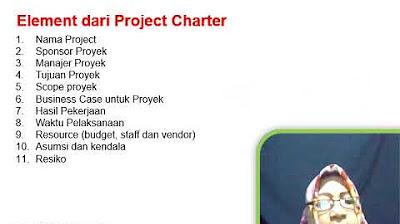015 What goes into risk assessment What are expectations
Summary
TLDRThis script emphasizes the importance of risk management and stakeholder expectations in project initiation. It likens entering a dark room to identifying and addressing unseen project risks. The analogy of finding the light switch highlights the need to reveal and respond to uncertainties for project success. It also stresses the importance of aligning stakeholders' expectations to avoid disastrous outcomes, and the necessity of creating a project charter as a high-level document summarizing the initiation phase.
Takeaways
- 🔍 The project is feasible and the organization has the necessary resources.
- 💡 In project management, identifying risks is like finding a light switch in a dark room.
- ⚠️ Dealing with uncertainty is crucial for project success.
- 🔎 Risks must be identified, analyzed, and responded to.
- 🔄 The planning phase will involve detailed risk management.
- 🎯 Addressing everyone's expectations is important.
- 🤝 Ensuring all stakeholders share the same vision is critical.
- 📊 Different stakeholders may have varying expectations for the project outcome.
- 🗣️ Engaging with stakeholders to resolve expectation gaps is essential.
- 📜 A project charter must be created to detail everything done in the initiation phase.
Q & A
What is the primary analogy used in the script to describe the initial step in managing a project?
-The primary analogy used is finding the light switch when entering a dark room, which in project management terms means revealing the risks associated with the project.
Why is identifying and addressing risks important in project management?
-Identifying and addressing risks is crucial because the way we deal with uncertainty will undoubtedly affect whether the project is a success or not.
What should be done with the risks identified during project management?
-The risks should be analyzed and responded to, ensuring that they are properly managed throughout the project's lifecycle.
What is the importance of aligning expectations among stakeholders in a project?
-Aligning expectations is important to ensure that everyone shares the same vision, resources, and understanding of accountability, preventing disastrous results from unmet expectations.
How can differing expectations among stakeholders impact a project?
-Differing expectations can lead to conflicts and misunderstandings, potentially causing the project to fail if not addressed and resolved in a timely manner.
What is a project charter and why is it necessary?
-A project charter is a high-level document that details everything done in the initiation phase of a project. It is necessary to formally authorize the project and ensure all stakeholders are aligned on the project's goals and scope.
What should be included in a project charter according to the script?
-A project charter should include a summary of the project's objectives, scope, stakeholders, resources, and any other relevant information gathered during the initiation phase.
Why is it important to spend time with stakeholders examining the project from different angles?
-Examining the project from different angles helps identify any discrepancies in expectations or understanding among stakeholders, allowing for early resolution of potential issues.
What is an example of a stakeholder's differing expectation mentioned in the script?
-One example is a stakeholder expecting the showroom to be targeted towards families and showcasing more saloon cars, while another expects luxury sports cars due to their popularity in the area.
How can the sponsor's perception of the project scope differ from that of other stakeholders?
-The sponsor may believe that hiring staff is outside the project scope, while other stakeholders consider the project incomplete until the showroom is open for business with staff in place.
What is the script's advice on dealing with expectation gaps among stakeholders?
-The script advises spending time with stakeholders to identify and resolve expectation gaps as early as possible to prevent potential issues and ensure project success.
Outlines

This section is available to paid users only. Please upgrade to access this part.
Upgrade NowMindmap

This section is available to paid users only. Please upgrade to access this part.
Upgrade NowKeywords

This section is available to paid users only. Please upgrade to access this part.
Upgrade NowHighlights

This section is available to paid users only. Please upgrade to access this part.
Upgrade NowTranscripts

This section is available to paid users only. Please upgrade to access this part.
Upgrade NowBrowse More Related Video
5.0 / 5 (0 votes)





